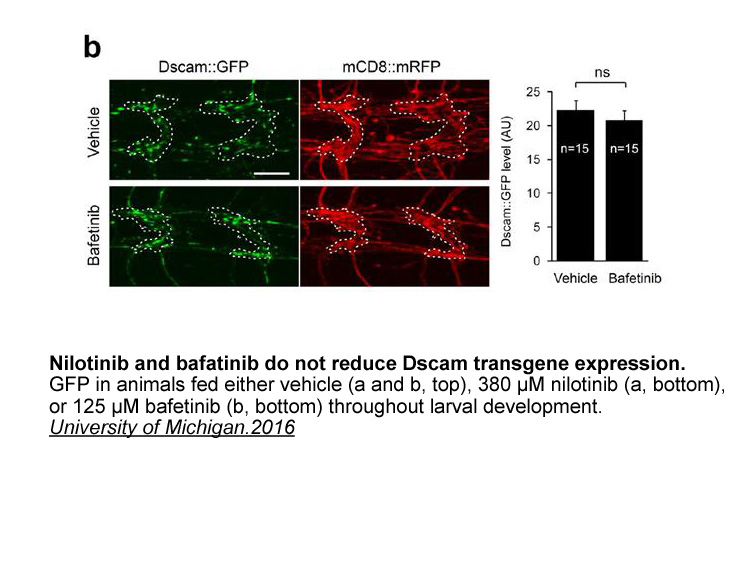Archives
br Conflicts of interest br Acknowledgments br Significance
Conflicts of interest
Acknowledgments
Significance
Introduction
Androgen receptor (AR) plays a paramount role in the onset and progression of prostate cancer (PC) (Burnstein, 2005, Lonergan and Tindall, 2011, Watson et al., 2015). This very facet underlies androgen deprivation therapy (ADT), a preferred treatment to negate AR transcriptional activity. While ADT provides immediate palliative benefits, it is ineffective long term, as the recalcitrant disease recurs within 2–3 years and progresses to a lethal stage, referred to as the metastatic castration-resistant prostate cancer (mCRPC). The AR gene (AR) is amplified or mutated in >50% of mCRPCs (Grasso et al., 2012, Robinson et al., 2015), suggesting that PC BIX 02565 may have reinvigorated AR transcription as a response to the loss of existing AR activity by ADT. Consequently, resistance to ADT has become one of the most vexing problems in PC therapy.
CRPC cells rely on AR for their growth despite androgen depletion; not surprisingly, AR has been the epicenter of targeted therapies. However, while enzalutamide, a second-generation AR antagonist, efficiently antagonized AR transcriptional activity by overcoming its nuclear translocation (Tran et al., 2009), the overall survival advantage was found to be ∼6 months, and most patients relapsed within 2 years (Bennett and Ingason, 2014). Interestingly, these relapsed patients exhibit renewed AR-regulated gene expression by multiple mechanisms, suggesting that CRPCs overcome enzalutamide blockade (Arora et al., 2013, Balbas et al., 2013, Joseph et al., 2013, Korpal et al., 2013). The AR splice variant-7 (AR-V7) is a truncated form of AR that lacks the C-terminal ligand-binding domain and remains constitutively active as a transcription factor (Dehm et al., 2008, Guo et al., 2009, Hu et al., 2009, Lu et al., 2015). Recent studies suggest that AR-V7 may be a clinically relevant mechanism of resistance to enzalutamide and the androgen-synthesis inhibitor abiraterone in CRPC patients (Antonarakis et al., 2014). The relative short-term efficacy of enzalutamide and abiraterone reveals two major caveats for tackling this complex disease; first, not all CRPCs are the same; and, second, other signaling events may be driving the disease. Moreover, because CRPCs display de novo or intrinsic ability to increase AR levels, inhibition of AR protein activity is not enough. To achieve complete remission, ablation of AR appears to be the key. However, targeted inhibition of transcription of AR and AR-V7 with small-molecule inhibitors has not yet been accomplished.
Resistance to ADT is closely associated with abnormal ty rosine kinase signaling; non-receptor tyrosine kinases (NRTKs), such as ACK1 and SRC, are known to interact with AR in an androgen-independent manner to promote CRPC xenograft growth (Guo et al., 2006, Mahajan and Mahajan, 2010, Mahajan et al., 2007). ACK1 is a structurally unique NRTK upregulated in ∼25% of prostate adenocarcinomas (Mahajan et al., 2010b, Mahajan and Mahajan, 2015, Taylor et al., 2010). Importantly, 10 out of 13 CRPCs exhibited 5- to >100-fold ACK1 overexpression (van der Horst et al., 2005). Further, LNCaP cells that are poorly tumorigenic in castrated mice formed robust CRPC tumors following expression of activated ACK1 (Mahajan et al., 2005). Moreover, the expression of activated ACK1 correlates positively with the progression of disease to CRPC stage, and PC patients whose tumors display moderate to strong staining of activated ACK1 have poor prognosis (Mahajan et al., 2010a). Combined, these studies have established a crucial role for ACK1 in PC pathogenesis. In this study, we investigated whether ACK1 tyrosine kinase promotes chromatin alterations to drive CRPC progression.
rosine kinase signaling; non-receptor tyrosine kinases (NRTKs), such as ACK1 and SRC, are known to interact with AR in an androgen-independent manner to promote CRPC xenograft growth (Guo et al., 2006, Mahajan and Mahajan, 2010, Mahajan et al., 2007). ACK1 is a structurally unique NRTK upregulated in ∼25% of prostate adenocarcinomas (Mahajan et al., 2010b, Mahajan and Mahajan, 2015, Taylor et al., 2010). Importantly, 10 out of 13 CRPCs exhibited 5- to >100-fold ACK1 overexpression (van der Horst et al., 2005). Further, LNCaP cells that are poorly tumorigenic in castrated mice formed robust CRPC tumors following expression of activated ACK1 (Mahajan et al., 2005). Moreover, the expression of activated ACK1 correlates positively with the progression of disease to CRPC stage, and PC patients whose tumors display moderate to strong staining of activated ACK1 have poor prognosis (Mahajan et al., 2010a). Combined, these studies have established a crucial role for ACK1 in PC pathogenesis. In this study, we investigated whether ACK1 tyrosine kinase promotes chromatin alterations to drive CRPC progression.
Results
Discussion
Here we demonstrate chromatin-directed transcriptome reprogramming of the cancer cells as a paradigm for the emergence of drug-resistant and lethal forms of PC. We uncovered that ACK1 directly reprograms the AR locus to promote castration and drug resistance. Further, we have demonstrated that ACK1-AR signaling sustains expression of genes important for DNA repair cell cycle by regulating E2F target genes, and cell proliferation by MYC regulation, to promote malignancy. This is consistent with earlier reports demonstrating a role for AR in the regulation of DNA repair genes in PCs (Goodwin et al., 2013, Mahajan et al., 2012a, Polkinghorn et al., 2013, Spratt et al., 2015). AR has been shown to regulate the MYC transcription program in an androgen-independent manner (Gao et al., 2013), which explains the significant loss of MYC target gene expression upon (R)-9bMS treatment. Intriguingly, these data also suggest a role for ACK1 in driving ER-mediated transcription, which is consistent with our earlier observation wherein ACK1 interacts with ER and its co-activator histone demethylase KDM3A (Mahajan et al., 2014). Combined, these results illustrate that targeting of major survival pathways by the ACK1 inhibitor underlie its effectiveness in restraining the growth of PC cells.